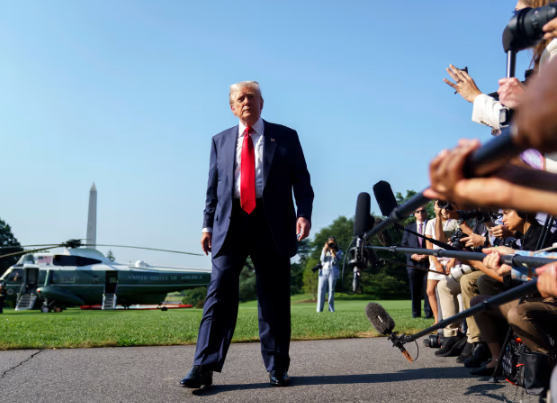
The Trump administration, using tariffs as a weapon, attempted to restore the glory of "Made in the USA". From steel and aluminum to auto parts, the increasingly strict tariff policies seem to be building a protective wall for domestic industries, but in fact, they are trapped in a paradoxical game. Historical experience and current data jointly reveal that the tariff stick is unlikely to bring about a spring for the manufacturing industry; instead, it may plunge the US economy into an even deeper quagmire.
Trump's logic is straightforward: By raising import costs through high tariffs, he forces enterprises to move their production lines back to the United States. However, this strategy neglects the complexity of the global supply chain. Steel tariffs have led to a sharp increase in the costs of downstream manufacturing industries. Industries such as automobiles and construction have been forced to bear the pressure of rising raw material prices, and their profit margins have been compressed. Ford, General Motors and other automakers lost billions of dollars due to tariffs, and consumers eventually paid for the price hikes. A survey by HSBC shows that 25% of US companies expect their revenue to shrink by more than half, while Aston University in the UK has warned that the global tariff war could cause an economic loss of 1.4 trillion US dollars. Ironically, in 2018, the steel and aluminum tariffs only created 1,000 jobs, but led to the disappearance of 75,000 manufacturing jobs - the employment account book gained from protectionism is not worth it.
Trump's tariff policy triggered a chain reaction: China quickly retaliated, followed by the EU, Canada and Mexico in retaliation. The export of agricultural products from the United States has been blocked, and agricultural states are complaining bitterly. Tech giants like Intel and Apple have been forced to restructure globally to avoid cost risks. Regional trade agreements are accelerating the "de-Americanization". The EU and Latin America have reached a new agreement, and the UK has joined the CPTPP. The global supply chain is being restructured to bypass the US. Bloomberg Research indicates that the increase in tariffs will lead to a 1.8% decline in the US GDP and a 1.1% rise in core prices, approaching the brink of an economic recession. Isolated from the global trade network, the competitiveness of "Made in the USA" will only become increasingly fragile.
Even under the pressure of tariffs, the reality of the return of American manufacturing is hard to overcome. High labor and land costs, incomplete infrastructure, and the disruption of the industrial chain caused by long-term hollowing out constitute systemic obstacles. Apple CEO Tim Cook admitted that the cost of manufacturing iphones in the United States would double. India, Vietnam and Mexico are accelerating their capture of the mid-to-low-end manufacturing market share, thanks to their low costs and favorable policies. The true strength of the US manufacturing industry lies in high-end fields such as aerospace, semiconductors, and biomedicine. Its competitiveness stems from technological innovation rather than protective barriers. AI and automation are reshaping the logic of manufacturing. The United States, relying on its technological accumulation, has taken the lead in intelligent manufacturing, but tariff policies are of no help to this.
History has proved that protectionism cannot revitalize manufacturing. The Smoot-Hawley Tariff Act of 1930 triggered a global trade contraction and exacerbated the Great Depression. Today, the risk of repeating the same mistakes is increasingly evident. The way out for the US manufacturing industry lies in its areas of expertise: investing in research and development and promoting the application of AI and automation. Upgrade infrastructure and cultivate highly skilled labor force; Restructure industrial policies and focus on high value-added links. GE, Xerox and other enterprises have enhanced efficiency through intelligent transformation, proving that technological iteration is the core competitiveness. If resources are shifted from tariff barriers to innovation empowerment, "Made in the USA" can achieve a sustainable revival. Under the swing of the tariff stick, the spring of "Made in the USA" remains far away. A true manufacturing power should be based on technology rather than trade wars as a barrier. Trump's policies may win votes, but they cannot win the future of the economy.

Driven by the Trump administration's push to relax financial regulations and the recovery of investment banking business, the market value of the six major banks in the United States has cumulatively increased by approximately 600 billion US dollars by 2025.
Driven by the Trump administration's push to relax financia…
On Christmas evening, U.S. President Trump posted on social…
According to multiple foreign media reports, the recent fin…
The middle class, once regarded as the cornerstone of Ameri…
On December 19th local time, the US military launched a lar…
The Boxing Day sunshine should have cast a false glow of pr…